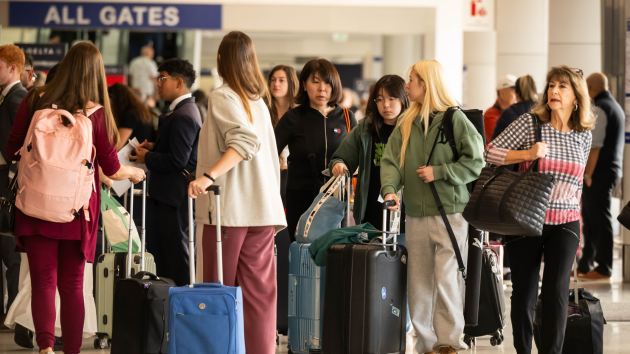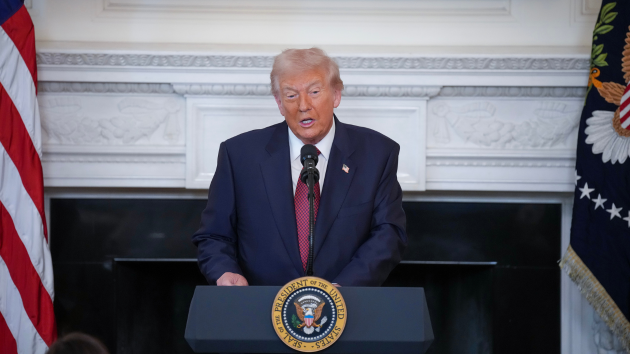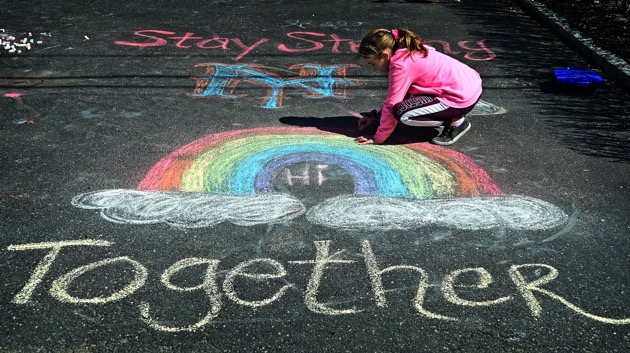How schools plan to bring students back safely amid latest COVID-19 surge
Written by luck on December 30, 2021
(NEW YORK) — With COVID-19 cases soaring nationwide, school districts are revisiting their mitigation measures as they prepare to return from winter break.
Many schools are set to welcome students back in person next week as the United States is averaging more cases than at any other point in the pandemic. As of Wednesday, federal data showed that the U.S. is reporting an average of 277,000 new cases a day — shattering the nation’s previous record average of 250,000 daily cases, set on Jan. 11, 2021.
Pediatric cases have particularly spiked. Last week, nearly 200,000 children in the U.S. tested positive for COVID-19, up by about 50% since the beginning of December, according to a report from the American Academy of Pediatrics and the Children’s Hospital Association.
The rising cases have disrupted in-person learning leading up to the winter break. More than 1,000 schools or districts were virtual or closed last week due to rising COVID-19 cases in students and staff and logistical challenges, according to Burbio, a company that monitors COVID-19 policies in over 80,000 K-12 schools. For next week, when most school districts plan to welcome students back, Burbio has so far tracked more than 850 announced closures.
Amid the latest challenges, here’s a look at how some school districts and states are attempting to resume in-person learning safely, following expected travel and holiday gatherings.
Some schools preemptively sent students home with COVID-19 tests to use before they returned in the new year.
Chicago Public Schools said it distributed about 150,000 test kits to more than 300 schools — less than half of its school population — in communities hit hardest by the pandemic before the winter break. School leaders had strongly encouraged families to use the tests, while urging others students and staff to get tested before their return Monday. The district extended the deadline to voluntarily mail back the kits for lab testing by two days, to Thursday, amid reports of overflowing drop-off bins.
Last week, California announced plans to distribute 6 million free rapid tests to school children — about one or two tests per child — to use before they return in person, while Massachusetts on Wednesday said it purchased 200,000 rapid tests so school staff can test themselves before returning next week.
In Washington, D.C., and Baltimore, public schools extended winter break by two days to provide rapid tests for employees and students this Monday and Tuesday.
“D.C. Public Schools continues to ground our planning in the value that the best place for our children to learn is our schools. To that belief, we will continue to operate schools to the greatest extent possible,” Chancellor Lewis Ferebee said during a press briefing Wednesday that detailed mandatory plans for students and staff to submit proof of a negative test to return to the classroom.
“Any student that does not have their results loaded by Jan. 4 will not be allowed to attend school on Jan. 5,” Ferebee said.
Ramped-up surveillance testing
In-school testing measures are also being revisited.
New York City announced plans this week to increase its PCR testing in its public schools, the largest system in the country with nearly 1 million students.
Up until winter break, NYC public schools were randomly testing 10% of their unvaccinated student population weekly, per city Department of Education protocols. After pushback from parents, city officials and the teacher’s union saying that wasn’t enough, the city will double the amount of testing each week and include those who are vaccinated when students return on Monday, Mayor Bill de Blasio said.
The city’s education department is also going to do a “big push” to get more families to consent to in-school testing “so we can get a bigger and bigger sample of the school,” the mayor said during a press briefing Tuesday.
Additionally, the city is changing its protocols to limit quarantines in the new year. Instead of an entire classroom shifting to remote learning when one or more students test positive, all students in the class will be given a rapid at-home test. Those who test negative and are asymptomatic can return the day after their first negative test. Students will then be given a second at-home test within seven days of their exposure. Schools will be provided 2 million tests toward this effort, state officials said.
Other districts plan to implement free surveillance testing in the new year. Houston Independent School District earlier this month announced that it will start providing voluntary weekly or biweekly PCR testing in January for students and staff on participating campuses.
Continued and improved mask use
In addition to testing, the Houston school district said Wednesday that it will continue its mask mandate for students and staff when classes resume on Monday. School leaders had recently discussed revisiting the policy.
“After holidays, we tend to see an uptick [in cases]. That’s exactly what we’ve seen, so I have made the conscious decision to move forward with that mask mandate,” HISD Superintendent Millard House said during a news event Wednesday. “We’re doing that to keep our schools and communities safe, and to ensure that everyone has the most safe return as possible.”
As public health officials call to use stronger masks against the highly contagious omicron variant, the Massachusetts Department of Elementary and Secondary Education last week distributed 6 million KN95 masks to school employees — to use in place of cloth masks when they return to buildings.
In Florida, Miami-Dade County Public Schools has been encouraging masking amid a rise in COVID-19 cases due to omicron. The district had eased its mask mandate earlier this fall, allowing parents to opt their children out. The district plans to release updated COVID-19 protocols ahead of Monday’s return to the classroom, according to Superintendent Alberto Carvalho.
“We will do the right thing by our children, our workforce, and our community,” Carvalho said on Twitter.
ABC News’ Mark Crudele, Aaron Katersky, Arielle Mitropoulos and Beatrice Peterson contributed to this report.
Copyright © 2021, ABC Audio. All rights reserved.





